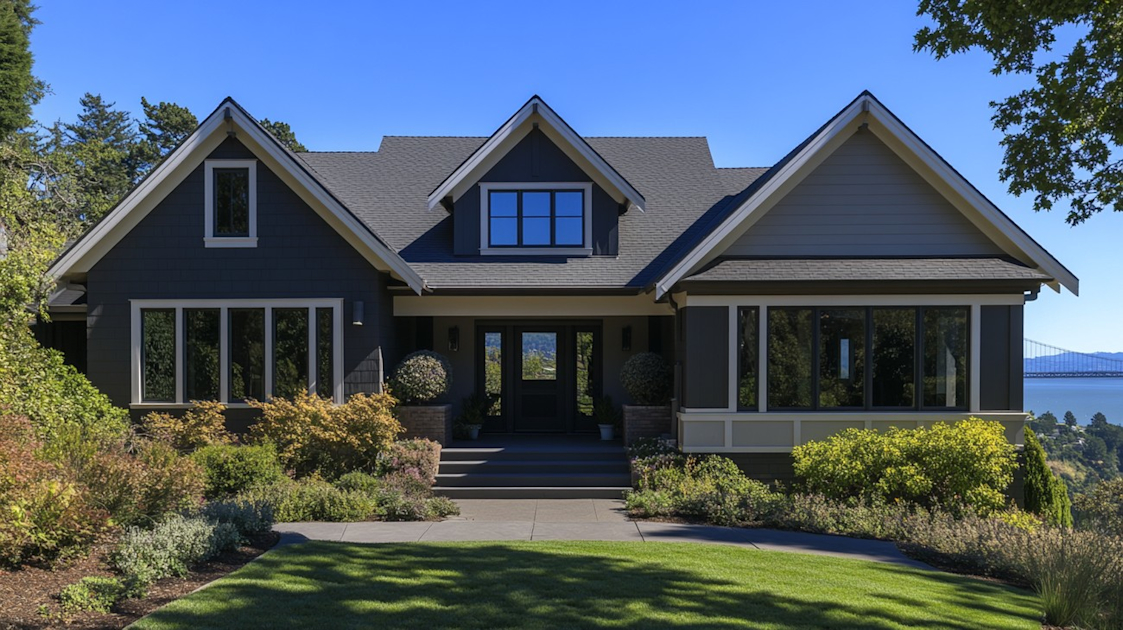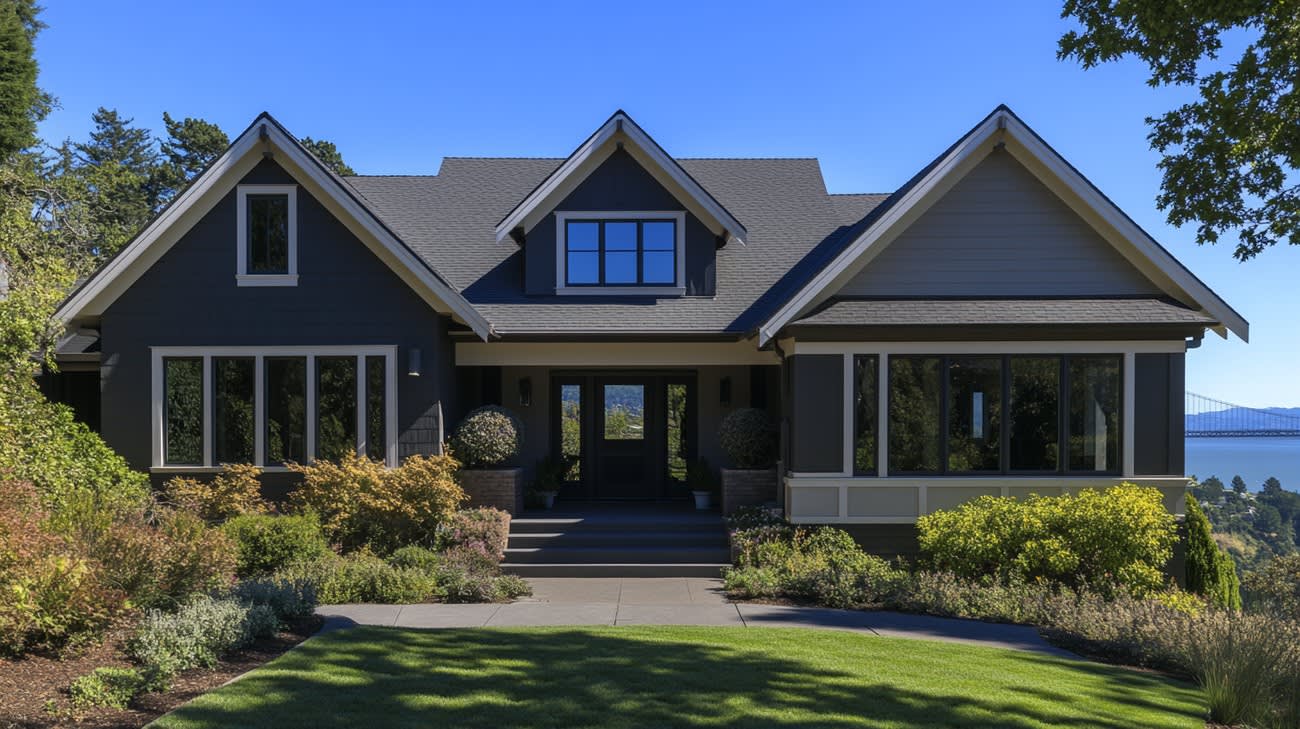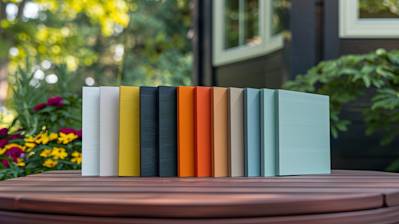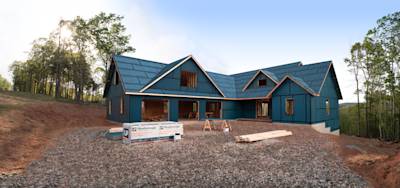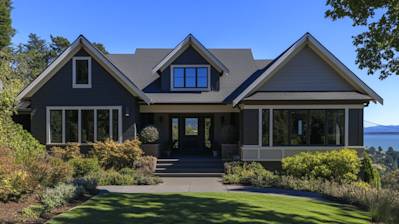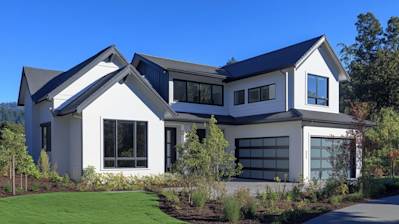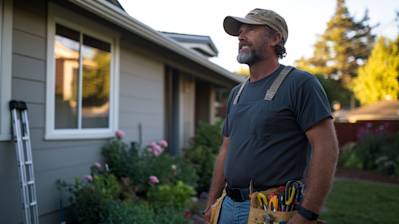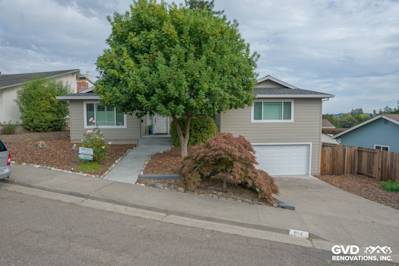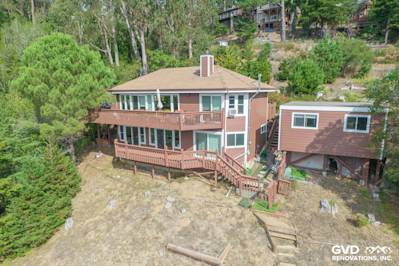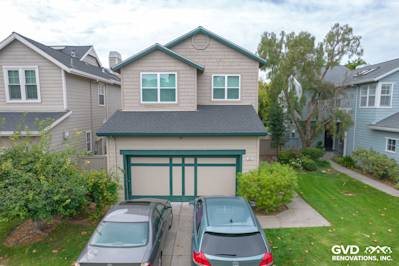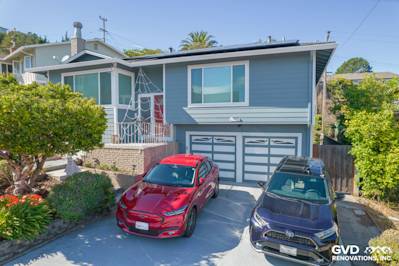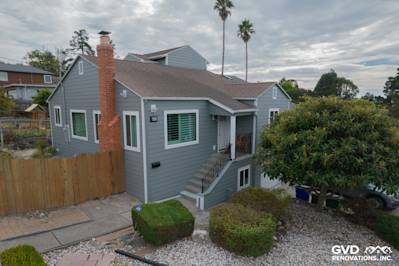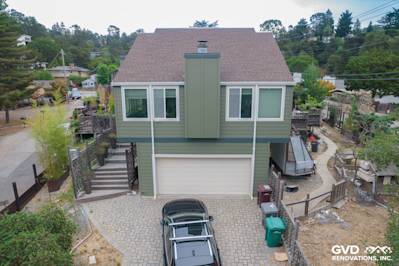Enhancing Home Aesthetics with Composite Siding
The exterior appearance of your home is not only the first impression visitors get but also greatly influences the value of your property. Among the several options available to homeowners seeking to improve their exteriors, composite siding stands out, and for good reasons. This article seeks to inform homeowners and builders about the intricacies of composite siding, why it’s an excellent choice, and how to maintain it.
Understanding Composite Siding
Composite siding is a type of material used to cover the exterior walls of residences and commercial structures. It comprises a combination of materials to form a uniquely resilient and aesthetically appealing siding solution. Simulating the appearance of traditional wood, composite siding offers increased durability and lower maintenance requirements, making it a popular choice for homeowners.
No composite siding is the same. The individual materials coalesce to create diverse expressions of beauty, character, and longevity. Common types of composite siding include:
- Fiber cement siding: Primarily made from cement mixed with wood fibers.
- Engineered wood siding: Made from wood products (sawdust, wood chips) blended with binding agents.
- Asbestos composite siding: An old-school composite solution, no longer in use due to health implications.
Why Composite Siding? Unleashing the Benefits
Composite siding delivers an exceptional range of benefits, beyond just aesthetics:
- Durability & Longevity: Composite siding is designed for strength. Unlike wood, it’s impervious to insects, rot, and water damage. It resists the effects of harsh weather and can last for several decades with proper care.
- Energy Efficiency: This siding type excels in thermal efficiency. It insulates homes, helping to maintain interior temperatures and reduce energy costs.
- Aesthetic Flexibility: Available in a broad array of textures and colors, homeowners can closely match their exteriors to personal preferences and architectural styles.
- Cost-Effectiveness: Though it offers high-end appeal, composite siding is often more affordable in the long run, considering its longevity and low maintenance requirements.
- Eco-Friendliness: Most composite siding is produced using recycled or waste wood materials, making it a more sustainable solution than traditional wood siding.
Installation of Composite Siding: Guided Steps
The effectiveness of composite siding heavily depends on its installation. While professional help is often recommended, the ambitious DIY-minded homeowner can also undertake this task. The required steps encompass:
- Preparation: The initial stage involves assessing the wall, noting its square footage to order the right amount of composite siding. Also, inspect and prepare the wall, noting areas requiring repair.
- Moisture Barrier Installation: Before the siding goes up, it’s crucial to install a moisture barrier. It acts as defense against water damage, a crucial step particularly for homes in wetter climates.
- Trim Installation: After the moisture barrier, install the trim, starting with corners and windows.
- Siding Installation: Begin from the bottom, working your way up to the top. Remember, the successive planks should overlap for adequate protection.
- Caulking & Painting: Use caulk to seal gaps after the siding installation. Lastly, composite siding often comes pre-painted, but if not, the final step will be to paint your new siding.
Maintenance of Composite Siding
Composite siding, characteristically low-maintenance, still needs attention to maintain its luster and ensure longevity. Here are a few maintenance tips:
- Regular Cleaning: Regular washing down with a soft cloth or a low-pressure hose can help keep your siding looking vibrant.
- Repaint When Necessary: Check your siding annually and consider repainting when the color starts to dull.
- Prompt Repairs: Though composite siding is touted for its hardness, it's not invincible. If you detect any damage, arrange for swift repairs to prevent further degradation.
Composite siding is an exciting solution for homeowners seeking a potent blend of durability, energy efficiency, eco-friendliness, aesthetic appeal, and cost-effectiveness. Though its installation requires meticulous care, and regular maintenance is necessary, the benefits that composite siding brings to homes are unquestionable. Which type of composite siding is right for your home? That’s a topic for another informative post!

Frequently Asked Questions about Composite Siding
Can composite siding withstand harsh weather?
Yes, composite siding is designed to withstand harsh weather conditions. Its superior durability enables it to resist damage from intense sunlight, heavy rains, strong winds, and severe temperature fluctuations. This makes composite siding a practical option in diverse climates.
How long does composite siding typically last?
Composite siding offers impressive longevity. It can last between 30 and 50 years. Depending on the quality of the product and its installation, plus the specific environmental conditions it is exposed to, some high-quality composite sidings may last even longer.
What is the maintenance process for composite siding?
Composite siding requires far less maintenance than many other types of siding. It doesn't need to be painted or stained. Usually, it just needs to be cleaned with pressure washing once or twice a year to remove dirt and grime. This low maintenance requirement is a major advantage of composite siding over other siding options.
Does composite siding resist pests?
Definitely! Composite siding is not porous, which means it resists pests like termites and carpenter ants that can cause serious damage to wood siding. This is another key benefit of composite siding contributing to its long-term durability and low maintenance.
Is composite siding environmentally friendly?
Composite siding is usually made from a mix of recyclable materials. Many manufacturers use recycled wood and plastic in their products, making it a sustainable choice. Furthermore, because it lasts much longer than other types of siding, composite siding reduces the frequency of replacement, which leads to less waste and conservation of resources.
What are the color and design options with composite siding?
Composite siding comes in a wide range of color and style options. It can replicate the look of natural wood, stone, or even brick, giving homeowners a wide variety of design and aesthetic choices. Some manufacturers offer custom color options too.
How is composite siding installed?
Installation of composite siding should ideally be carried out by professionals, as it requires specific tools and expertise. The siding is usually installed over a moisture barrier and securely fastened to the house using nails or screws. The siding is overlapped to create a weatherproof seal. The job could potentially be done DIY if you are extremely skilled, but for most homeowners, hiring a professional is advisable.
Can composite siding improve the value of my home?
Absolutely! Composite siding not only boosts the curb appeal of your home with its attractive appearance but also can significantly improve its resale value thanks to its durability, resistance to adverse weather conditions, and low maintenance needs.

Pros of Composite Siding
Durability
Composite siding is widely hailed for its durability. Unlike wood, which may crack, warp or rot based on the weather conditions, composite siding can withstand extreme changes in the environment. This includes intense heat, cold, and moisture.
Resistance to Decay and Insects
Composite siding, because of its synthetic nature, is resistant to decay. This makes it a great long-term investment for homeowners. Moreover, unlike wood that may be prone to termite infestation, composite materials are not appealing to insects which makes the threat of insect-borne damage all but eliminated.
Low-Maintenance
Composite siding is virtually maintenance-free. Unlike wood which requires repainting or refinishing every couple of years, composite siding can maintain its appearance and structural integrity with very little maintenance work. A simple cleaning with a hose and soapy water every now and then should suffice to keep it looking fresh and new.
Versatility in Design
Composite siding can be molded and styled into virtually any design a homeowner desires. It can mimic the appearance of wood, stucco, or masonry materials. This gives homeowners a chance to enjoy aesthetics that meet their taste and preference without exposing their homes to the vulnerabilities associated with the actual materials being imitated.
Energy Efficiency
Composite siding materials are often engineered to offer better insulation than other siding options. This means they can help create a more energy-efficient home, reducing the cost of heating and cooling expenses overall.
Environmental Impact
Composite siding, especially the type made from recycled materials, can be an environmentally-friendly choice because it repurposes waste material that otherwise end up in landfills.
Cons of Composite Siding
Initial Cost
The initial cost of purchasing composite siding is typically higher than that of other traditional siding materials like vinyl or wood. Thus, it might be a bit over the budget for homeowners looking for a more economical option.
Difficulty in Repair
While composite siding is known for its durability, in the event that it does get damaged, repairing it can be a bit more challenging compared to other types of siding. Color matching can also pose additional challenges, especially for composite siding that has faded over time.
Potential for Fading
Over time, the color of composite siding may fade due to exposure to direct sunlight. Although some manufacturers are making progress in UV-resistant technologies, this is still a potential issue to consider.
Environmental Considerations
While some composite materials are made from recycled materials, others may contain new plastic and other compounds that are not as eco-friendly. Moreover, at the end of its life cycle, composite siding is not always recyclable and may need to be disposed of in a landfill.
Heavier Weight
Composite siding is heavier than other siding materials, which might require added labor during installation. This can somewhat offset the cost-efficiency advantages as the labor cost might be higher.
Limited Color Options
Although they can mimic the appearance of various materials, composite sidings usually come in limited color options unlike the vast palette available with materials like wooden siding. This may limit homeowners from achieving their desired aesthetic effect.
Myths and Misconceptions about Composite Siding
The world of home construction and renovation is filled with several myths and misconceptions, and composite siding is not spared from this. Whether from misinformed hearsay or outdated information, potential homeowners or renovators can find themselves making wrong decisions based on these fallacies. Let's debunk and provide clarity on some of the most common myths attributed to composite siding.
Myth #1: Composite Siding is More Expensive Than Traditional Wood Siding
One common misconception that gets thrown around a lot is that composite siding is always significantly more expensive than traditional wood siding. This belief often stems from the initial price comparison of the two materials.
The Truth
The truth, however, is much more complex. While the upfront cost of purchasing composite siding might be higher, when you take long-term maintenance and replacement costs into account, the figures often come out in favor of composite siding. Composite siding often requires less upkeep and is more resistant to weathering, which means significant savings down the line.
Myth #2: Composite Siding Looks Cheap and Unnatural
There's a belief that composite siding cannot mimic the natural aesthetic and texture of other siding materials, especially wood. Some people think that it looks and feels 'plastic-like' or cheap.
The Truth
The reality, however, is that composite siding has come a long way from its early days. Today’s composite siding products are manufactured with texture and color variations that do an excellent job of mimicking natural materials. Indeed, high-quality composite siding can sometimes be almost indistinguishable from natural materials to the untrained eye.
Myth #3: Composite Siding is Not Durable
Some individuals have a notion that composite siding is not durable and easily compromised by weather elements, pests, or time.
The Truth
The fact contradicts this myth. High-quality composite siding is typically very durable and designed to withstand years of exposure to weather, pests, and harsh environmental conditions. Composite siding often resists fading, cracking, and rusting more effectively than many other siding materials.
Myth #4: Composite Siding has Limited Style Options
The belief that composite siding is available only in a limited range of styles, colors, and finishes is another misinterpretation that many people have.
The Truth
In reality, one of the advantages of composite siding is its versatility when it comes to design. Manufacturers produce composite siding in a wide array of colors, textures, and styles from sleek, modern designs to those that mimic traditional materials such as stone, brick, or wood. This versatility means homeowners can almost always find a composite siding style that suits their personal preference and the architectural style of their property.
Myth #5: Composite Siding is Bad for the Environment
One final myth that we'll debunk is that composite siding is harmful to the environment. This misconception often stems from the idea that composite siding is made from non-recyclable materials.
The Truth
In reality, many composite siding brands use a high percentage of recycled materials in their products. Moreover, the long lifespan of composite siding can also be seen to benefit the environment, as it reduces the need for frequent replacements and consequent waste.
All these myths and misconceptions highlight the importance of doing thorough research and gathering factual information before making decisions about home construction or renovation. With a clearer understanding of the advantages and characteristics of composite siding, homeowners can make more informed decisions that meet their aesthetic preferences, budget, and environmental considerations.
Summary
So, there you have it. Composite siding is becoming increasingly popular in contemporary home construction. Its durability, versatility, and aesthetic appeal make it a prime choice for homeowners. Not only does it give you a wide range of design options, but it also requires less maintenance than its traditional counterparts. When you consider all these factors, it's easy to see the advantages of composite.
What sets composite siding apart is its environmental friendliness. It's made of recycled materials, reducing waste and contributing to a healthier planet. Plus, its insulation properties improve energy efficiency, reducing your heating and cooling costs. Choosing composite means making a choice that benefits both you and the Earth.
Lastly, remember that while composite siding may cost a bit more upfront, it's a long-term investment. The low maintenance and durability factors mean that you'll be saving on upkeep costs over the years. So, if you're thinking about a home renovation or construction project, composite siding should definitely be on your list of options.
About Bay Area Siding Company
Bay Area Siding Company, located in the ever-beautiful Bay Area, California, is your go-to local expert for premier siding installation and repair. Our commitment is delivering top-notch service, using high-quality materials, coupled with stellar craftsmanship. Whether your project is residential or commercial, we are dedicated to providing the utmost in professional yet friendly service. Our team of skilled, experienced professionals helps to maintain the dynamic face of Bay Area homes and businesses, transforming them into functional works of art. We can't wait to realize your vision and enhance your property's aesthetic appeal and value. No project is too big or small - we treat each project with the same meticulous attention to detail. We're not just a siding company; we're a part of the Bay Area community, neighbors helping neighbors build better, beautiful spaces.
The information provided here is intended for general reference and should not be considered professional advice. Before starting any project, consult a licensed contractor. Product features, specifications, and warranties may have been updated since this was published. Any mention of brands or products reflects personal opinion and does not constitute an endorsement or warranty.

